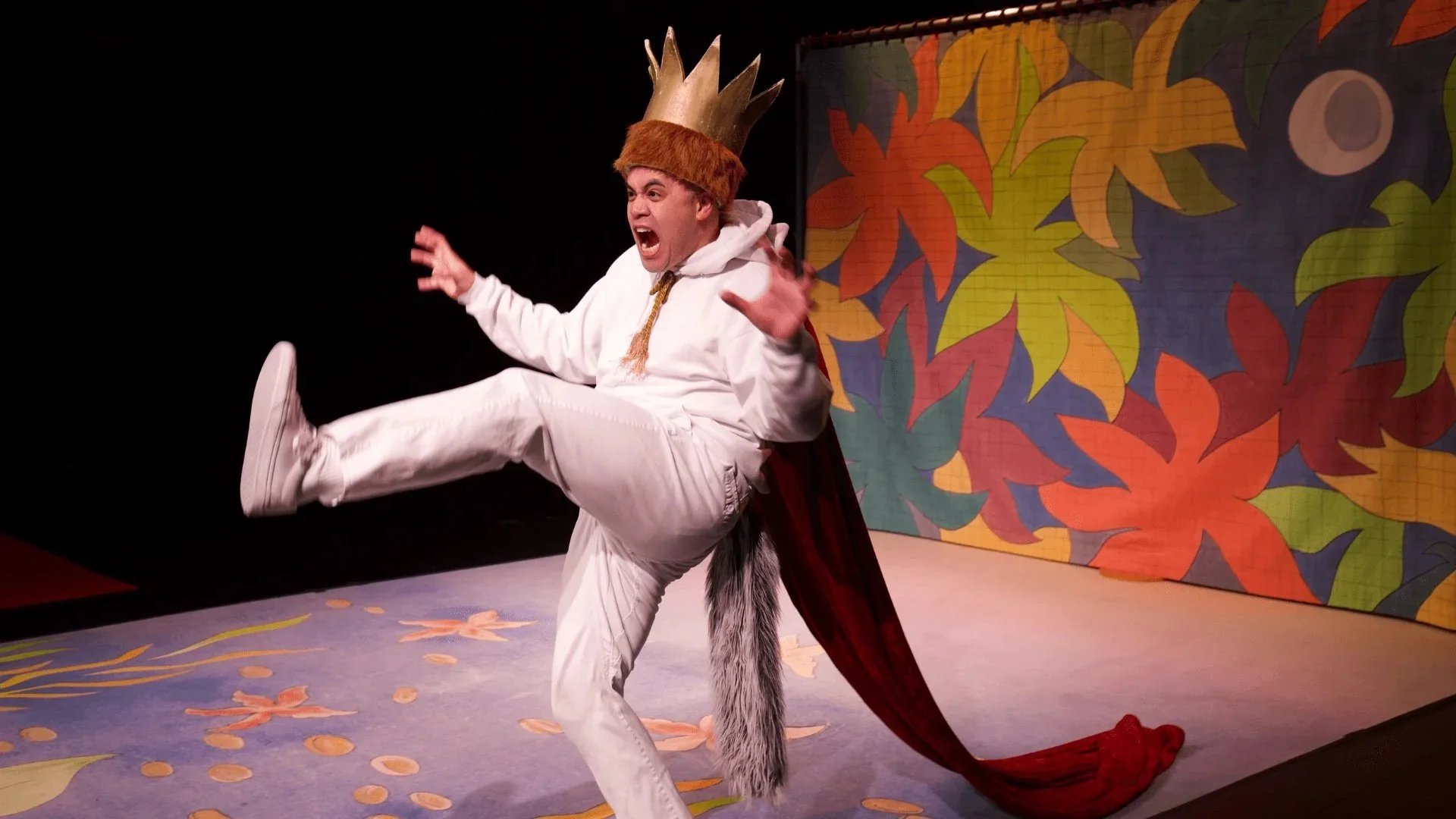A WONDERHEADS Christmas Carol tells the story of Scrooge's redemption with whimsical masks and puppetry
Kate Braidwood and Andrew Phoenix’s holiday favourite reinvents the classic Charles Dickens novel as a physical-theatre show
A WONDERHEADS Christmas Carol. Photo by Peter Pokorny
WONDERHEADS presents A WONDERHEADS Christmas Carol at Centennial Theatre in North Vancouver on December 11 and 12 and Massey Theatre in New Westminster on December 13 and 14
VICTORIA-BASED PHYSICAL theatre company WONDERHEADS is perhaps best known for its whimsical full-face masks, which are up to double the size of a normal human head and adorned with impressive details.
Kate Braidwood, who co-founded WONDERHEADS in 2009 with Andrew Phoenix and is the company’s resident mask-maker, says it can take some 50 hours to craft a single mask. The process begins with a conceptualization phase (deciding what emotions the character will experience in the show, and gathering sketches and portraits for inspiration); then, Braidwood sculpts the head out of clay, makes a negative silicone mold, and casts the mask in papier-mâché. There’s sanding, smoothing, and painting, plus the addition of aesthetic touches like hair, hats, eyebrows, and facial hair.
In A WONDERHEADS Christmas Carol, the company’s annual holiday production, there are more than 15 masks in the show—which meant that piecing it all together was a huge endeavour. (Some quick math for those who are interested: It took Braidwood around 750 hours to make 15 masks, or more than 31 straight days of work.)
Speaking to Stir from Calgary by Zoom on the morning before the first show of the company’s Western Canada tour this holiday season, B raidwood says that while it might be tempting to make more than one mask per character, her expertise is creating expressions that seem to shift before viewers’ eyes.
“One of the comments we most often get from people when they see our shows is how amazed they are that it appears as though these characters, these masks, experience such a vast array of emotions,” the artist shares. “They come to life, and they shouldn’t be able to—they are these fixed sculptures. But we really like the challenge of creating masks that have asymmetry and a variety of emotions built into the faces.”
Adds Phoenix: “People will see a show, and they’ll say, ‘You did change the mask, right?’ Or ‘Is there like a switch you push that makes the eyebrow lift?’ Or ‘Did you change something? Because I swear in the beginning there wasn’t a smile.’ Or, ‘Oh, it’s a lighting trick.’ And obviously shadow is at play, for sure that helps shift things. But it’s not like we’re adjusting a light just in time, you know? It really has to do with the amazing work Kate does in making the masks, but also the physical performances, the training, the work we do to really watch and make sure that we’re portraying the emotion we want to. We think that we carry all our emotions on our faces, but you can tell that somebody is angry or sad just from seeing them from behind.”
Andrew Phoenix (left) and Kate Braidwood. Photo by DesignEgg
Partners in both art and life, Braidwood and Phoenix met while pursuing master’s degrees in ensemble-based physical theatre at Dell’Arte International in California. Braidwood grew up in Maple Ridge, while Phoenix is originally from Texas; after graduating from Dell’Arte, the two founded WONDERHEADS with the creation of their first masked-theatre show, Grim and Fischer, in which a stubborn grandmother battles the Grim Reaper. Braidwood and Phoenix now call Victoria home.
This season, Lower Mainland performances of A WONDERHEADS Christmas Carol include stops at the Centennial Theatre in North Vancouver on December 11 and 12 and the Massey Theatre in New Westminster on December 13 and 14. The production is a fantastical reimagining of the age-old Charles Dickens novel A Christmas Carol, in which an irritable old miser named Scrooge is visited by the ghosts of Christmases past, present, and future, who change his ways by teaching him the value of generosity and joy. But in the WONDERHEADS version, there’s no dialogue; it’s all physical theatre and magical stage effects.
Braidwood and Phoenix are co-creators and co-directors of A WONDERHEADS Christmas Carol. Braidwood also plays the role of Scrooge in the production and designed the sound, while Phoenix designed the set and puppets (which include a 10-foot-tall Ghost of Christmas Present, and a glowing Ghost of Christmas Past that floats around the stage).
“We really love that there’s so much whimsical imagery in this story,” Braidwood says. “There’s ghosts and time travel, and there’s imagination, and that’s exactly what we love to imbue in our shows.”
To tell the tale of Scrooge as he’s visited by the ghosts, Braidwood is joined by just three other cast members on-stage—Pedro Siqueira, Sarah Robertson, and Emily Case—who play nearly 20 characters between themselves.
“It’s a bit of a virtuosic dance of them running off stage and changing characters, sometimes back and forth from one scene to the next,” Phoenix says. “But that’s sort of the magic of the puppetry and of the masks is that they can transform completely with just a 20-second offstage change.”
A WONDERHEADS Christmas Carol is now on its fifth year of touring for the holidays, and has quickly become a local favourite. Phoenix and Braidwood believe there are a couple of qualities that make it such an enduring tale.
“It’s kind of surprising as a Christmas story, because it’s a ghost story,” Phoenix notes. “It’s the idea that in Victorian England, it was the time of year where there was the most darkness. So people would sit by candlelight at three in the afternoon, or whenever the sunset happened, and they would live in the spookiness of that and tell these ghost stories. But also it’s Christmas time, where it’s about family, joy, and celebration. So those two things combined are fun.”
Says Braidwood: “It’s a reminder of the importance of empathy. Really, I think that’s what it comes down to. We love watching this story of redemption. We love watching this journey of a person who seems like he’s beyond redemption—he is selfish, greedy, and cruel, and he is redeemed by this experience that he has and remembers how to be empathetic and generous. Ultimately, it’s a hopeful story. And I think people are drawn to that.” ![]()





![Theatre review: Complete Works of William Shakespeare (abridged) [revised] [again] takes pleasingly panicked tour of the Bard’s canon](https://images.squarespace-cdn.com/content/v1/5f10a7f0e4041a480cbbf0be/1752776963817-BS2BYYQMLMSGU9OG3E37/Nathan-Kay-and-Craig-Erickson.-Photo-By-Tim-Matheson.jpg)



















